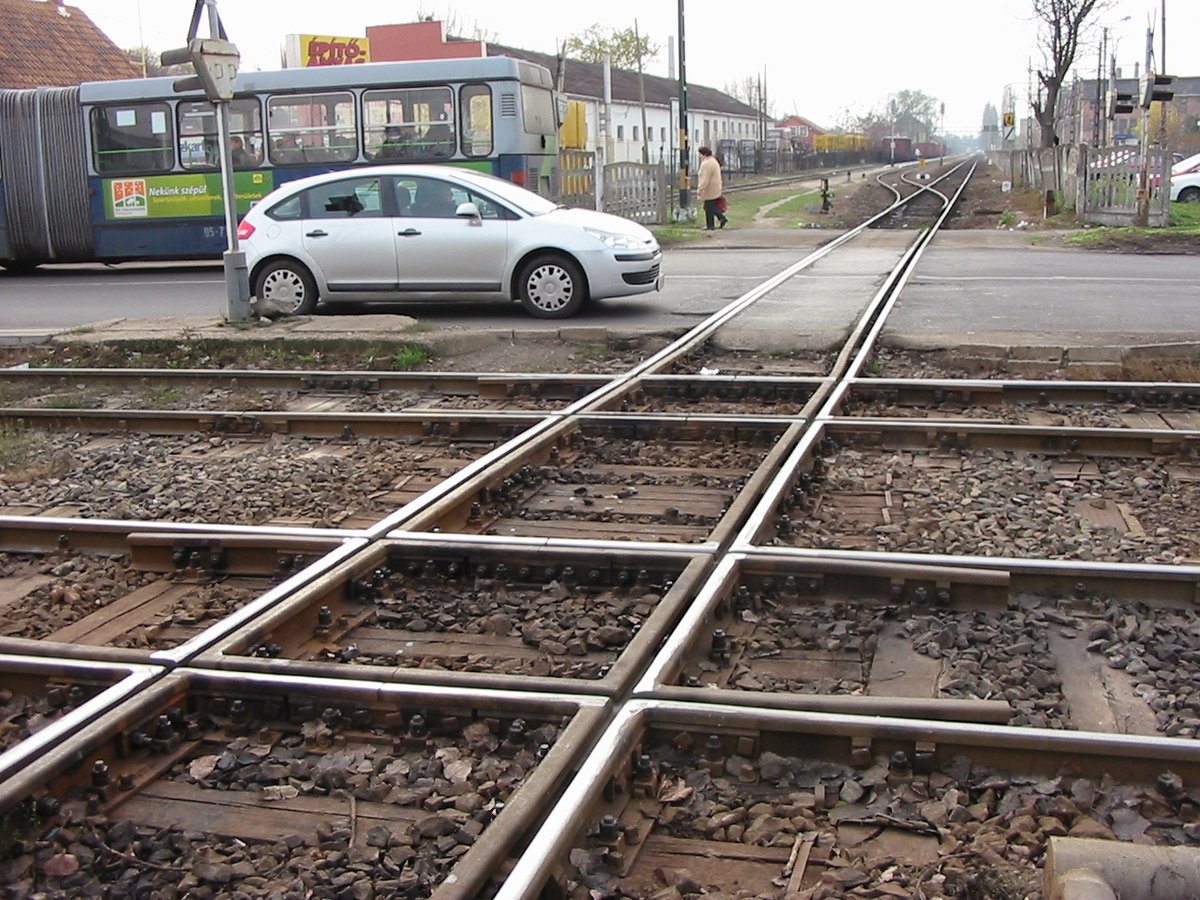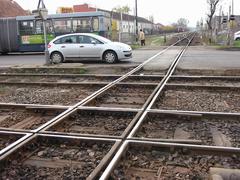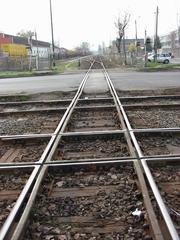
Visiting Üllői út, Budapest: Complete Guide to Tickets, Hours, and Attractions
Date: 14/06/2025
Introduction
Üllői út, stretching approximately 15–16 kilometers from Budapest’s bustling city center to the outskirts near Liszt Ferenc International Airport, is one of the city’s most significant and historic avenues. Not just a transport artery, it is a vibrant corridor that encapsulates Budapest’s layered history, architectural diversity, and contemporary urban life. Along its length, visitors will find major landmarks such as the Semmelweis University, the stunning Museum of Applied Arts, the Hungarian Natural History Museum, and the expansive Népliget Park. With excellent public transportation and a lively mix of shops, dining, and culture, Üllői út is both a destination and a journey through Budapest’s urban soul. This guide provides detailed insights on visiting hours, ticketing, transportation, accessibility, and the avenue’s top attractions, offering everything you need for a seamless and enriching visit (Museum of Applied Arts, Hungarian Natural History Museum, BKK, source 1, source 2, source 3).
Table of Contents
- Overview and Historical Significance
- Key Attractions Along Üllői út
- Visitor Information: Hours and Tickets
- Transportation and Accessibility
- Urban Development and Cultural Landscape
- Notable Historical Events
- Visual Highlights and Best Photo Spots
- Practical Tips and FAQs
- Summary Table: Transport Facts
- Conclusion
- Sources
Overview and Historical Significance
Üllői út is a living chronicle of Budapest’s evolution, originating in the 18th–19th centuries during the Austro-Hungarian era. Named after the nearby town of Üllő (“anvil” in Hungarian, referencing local blacksmith traditions), the avenue has witnessed pivotal events, including the 1956 Hungarian Revolution and significant urban modernization. Historically, it marked boundaries between districts like Ferencváros and Józsefváros and has always been integral to public transport and urban growth (budapest18.hu). Today, Üllői út is a showcase of Budapest’s architectural variety, from 19th-century facades to Art Nouveau masterpieces and modern developments.
Key Attractions Along Üllői út
1. Semmelweis University
A historic hub of medical education, Semmelweis University’s buildings date back to the late 19th century. While access to the university’s interior is typically reserved for students and staff, the architecture is worth admiring, and the nearby ELTE Füvészkert (Botanical Garden) offers a tranquil retreat.
- ELTE Botanical Garden: Open daily 9:00 AM–6:00 PM, entry 1,000 HUF.
2. Museum of Applied Arts (Iparművészeti Múzeum)
Located at 33-37 Üllői út, this Art Nouveau gem by Ödön Lechner is famed for its green-tiled roof and lavish interiors. The museum hosts rotating and permanent exhibitions of Hungarian and international applied arts.
- Hours: Tuesday–Sunday, 10:00 AM–6:00 PM (last entry 5:30 PM)
- Tickets: Adults 2,600 HUF, discounts for students/seniors
- Accessibility: Fully accessible
- Official Site
3. Hungarian Natural History Museum (Magyar Természettudományi Múzeum)
Set in the historic Ludovika Academy, this museum features Hungary’s largest natural history collection.
- Hours: Tuesday–Sunday, 10:00 AM–6:00 PM; closed Mondays
- Tickets: Adults 1,800 HUF; discounts and family tickets available
- Accessibility: Wheelchair accessible
- Official Site
4. People’s Park (Népliget)
Budapest’s largest public park, Népliget is accessible from Üllői út and offers walking paths, sports fields, and event spaces. It is open year-round and hosts community events and festivals.
5. Corvin Quarter (Corvin Negyed)
A vibrant district centered around Corvin-negyed metro station, featuring Corvin Plaza (shopping mall, open daily 10:00 AM–9:00 PM), Corvin Cinema, and striking street art murals.
6. Groupama Arena
Home of Ferencvárosi TC, one of Hungary’s top football clubs. Guided stadium tours are available by appointment.
Visitor Information: Hours and Tickets
- Public Spaces (Üllői út, Népliget): Always open, free access
- Museums: Typically open Tuesday–Sunday, 10:00 AM–6:00 PM; closed Mondays
- Ticketed Attractions: Prices range from 1,000–2,600 HUF; family and concession tickets available
- Guided Tours: Offered at major museums and for Groupama Arena (book via official websites)
- Markets and Shopping: Corvin Plaza, local markets (hours vary)
Transportation and Accessibility
Metro Line 3 (Blue Line)
Runs beneath Üllői út, providing rapid access to major districts and the airport. Key stations: Kálvin tér, Corvin-negyed, Klinikák, Nagyvárad tér, Népliget, Határ út.
- Frequency: Every 3–5 minutes (peak hours)
- Accessibility: Elevators and ramps at all stations
Bus and Tram Services
- Buses: 200E (airport), 99, 123, 136E, 100E (express to airport)
- Trams: Lines cross Üllői út at Nagykörút
- Night Buses: 914, 950, 200E ensure 24/7 access
Cycling and Walking
Dedicated bike lanes, MOL Bubi bike-sharing stations, and wide sidewalks support cyclists and pedestrians.
Accessibility for Disabilities
All metro stations on Üllői út are equipped with elevators or ramps, and most buses and trams are low-floor. The BudapestGO app provides accessible route planning.
Urban Development and Cultural Landscape
Üllői út is a microcosm of Budapest’s urban evolution, with a blend of 19th-century architecture, socialist-era blocks, and modern developments. Local government initiatives prioritize green spaces, improved public lighting, and pedestrian-friendly areas, aiming to balance historical preservation with contemporary needs (budapest18.hu).
Notable Historical Events
Üllői út was a key site during the 1956 Hungarian Revolution, with several memorial plaques and monuments commemorating pivotal moments in Hungary’s struggle for freedom.
Visual Highlights and Best Photo Spots
- Museum of Applied Arts: Striking Art Nouveau façade and interiors
- Népliget: Expansive green scenery
- Corvin Quarter: Modern murals and street art
- Hungarian Natural History Museum: Historic Ludovika Academy architecture
Practical Tips and FAQs
- Plan with the BudapestGO app for routes, ticketing, and real-time transport updates
- Avoid rush hours (7:00–9:00 AM, 4:30–6:30 PM)
- Purchase and validate transport tickets to avoid fines
- Explore on foot or by bike for the best cultural insights
- Safety: Üllői út is safe, but standard urban precautions are advised, especially at night
Frequently Asked Questions
Q: Are there entrance fees to Üllői út or public parks?
A: No, public spaces are free; museums and attractions may charge entry.
Q: How do I access Üllői út from the airport?
A: The 100E Airport Express or Metro Line 3 (via Kőbánya-Kispest) provide direct connections.
Q: Are guided tours available?
A: Yes, especially for major museums and select districts; check official sites for bookings.
Q: Is Üllői út accessible for wheelchair users?
A: Yes, most public transport and sidewalks are accessible, but check individual attractions for details.
Q: Can I buy combined tickets for multiple sites?
A: Not generally, but some museums offer discounts; always check current promotions.
Summary Table: Key Transport Facts for Üllői út
| Mode | Key Lines/Services | Accessibility | Frequency | Notes |
|---|---|---|---|---|
| Metro | M3 (Blue Line) | High | 3–5 min | Elevators at all stations |
| Bus | 200E, 99, 123, 136E, 100E | High | 5–20 min | 100E direct to airport |
| Night Bus | 914, 950, 200E | High | 15–30 min | Covers after-hours travel |
| Cycling | MOL Bubi | Moderate | N/A | Bike stations at key locations |
| Walking | N/A | High | N/A | Best for short, scenic segments |
For real-time updates and accessibility information, consult the BKK website or BudapestGO app.
Conclusion
Üllői út exemplifies Budapest’s blend of historical depth, cultural richness, and modern urban life. Whether you’re exploring museums, relaxing in parks, admiring architecture, or enjoying the avenue’s lively neighborhoods, Üllői út offers a comprehensive and accessible introduction to the city. Ongoing urban renewal and cultural initiatives ensure the avenue remains vibrant and welcoming for locals and visitors alike. Leverage digital tools like BudapestGO and Audiala for the latest updates, and immerse yourself in the living history and daily rhythm of one of Budapest’s most essential streets.
Sources and Further Reading
- Museum of Applied Arts of Budapest - Council of Europe
- Urban and Cultural Significance, Budapest18
- Public Transport and Accessibility, utca-terkep.info
- Hungarian Natural History Museum Official Website
- Museum of Applied Arts Official Website
- Budapest Public Transport Centre (BKK)
- Trip to Budapest Official Tourism Portal
For more about Budapest’s historical sites and public transport, visit our related articles or consult the official sources above.









































































































































































